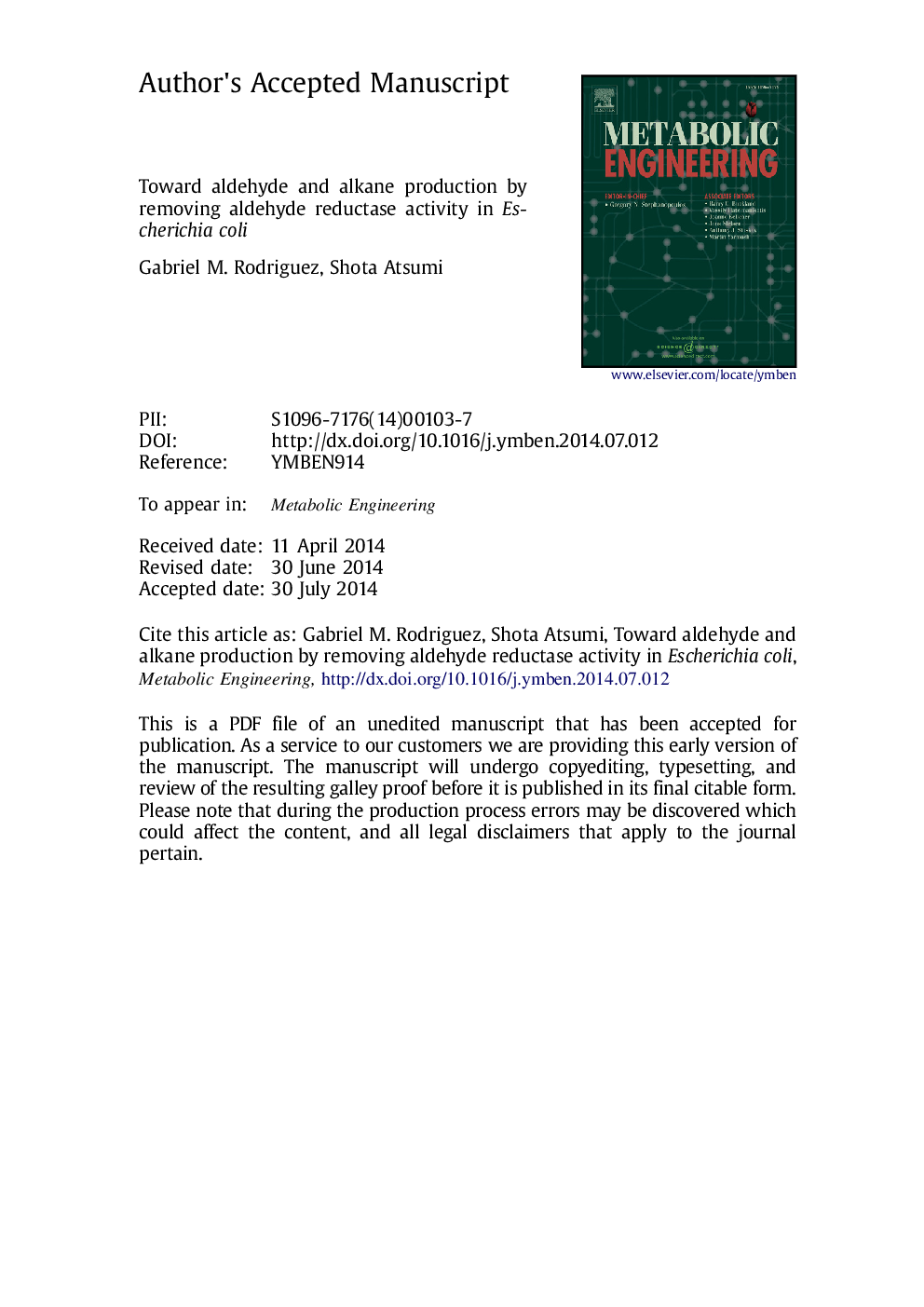| کد مقاله | کد نشریه | سال انتشار | مقاله انگلیسی | نسخه تمام متن |
|---|---|---|---|---|
| 6494577 | 44813 | 2014 | 37 صفحه PDF | دانلود رایگان |
عنوان انگلیسی مقاله ISI
Toward aldehyde and alkane production by removing aldehyde reductase activity in Escherichia coli
دانلود مقاله + سفارش ترجمه
دانلود مقاله ISI انگلیسی
رایگان برای ایرانیان
کلمات کلیدی
موضوعات مرتبط
مهندسی و علوم پایه
مهندسی شیمی
بیو مهندسی (مهندسی زیستی)
پیش نمایش صفحه اول مقاله

چکیده انگلیسی
Advances in synthetic biology and metabolic engineering have enabled the construction of novel biological routes to valuable chemicals using suitable microbial hosts. Aldehydes serve as chemical feedstocks in the synthesis of rubbers, plastics, and other larger molecules. Microbial production of alkanes is dependent on the formation of a fatty aldehyde intermediate which is converted to an alkane by an aldehyde deformylating oxygenase (ADO). However, microbial hosts such as Escherichia coli are plagued by many highly active endogenous aldehyde reductases (ALRs) that convert aldehydes to alcohols, which greatly complicates strain engineering for aldehyde and alkane production. It has been shown that the endogenous ALR activity outcompetes the ADO enzyme for fatty aldehyde substrate. The large degree of ALR redundancy coupled with an incomplete database of ALRs represents a significant obstacle in engineering E. coli for either aldehyde or alkane production. In this study, we identified 44 ALR candidates encoded in the E. coli genome using bioinformatics tools, and undertook a comprehensive screening by measuring the ability of these enzymes to produce isobutanol. From the pool of 44 candidates, we found five new ALRs using this screening method (YahK, DkgA, GldA, YbbO, and YghA). Combined deletions of all 13 known ALRs resulted in a 90-99% reduction in endogenous ALR activity for a wide range of aldehyde substrates (C2-C12). Elucidation of the ALRs found in E. coli could guide one in reducing competing alcohol formation during alkane or aldehyde production.
ناشر
Database: Elsevier - ScienceDirect (ساینس دایرکت)
Journal: Metabolic Engineering - Volume 25, September 2014, Pages 227-237
Journal: Metabolic Engineering - Volume 25, September 2014, Pages 227-237
نویسندگان
Gabriel M. Rodriguez, Shota Atsumi,